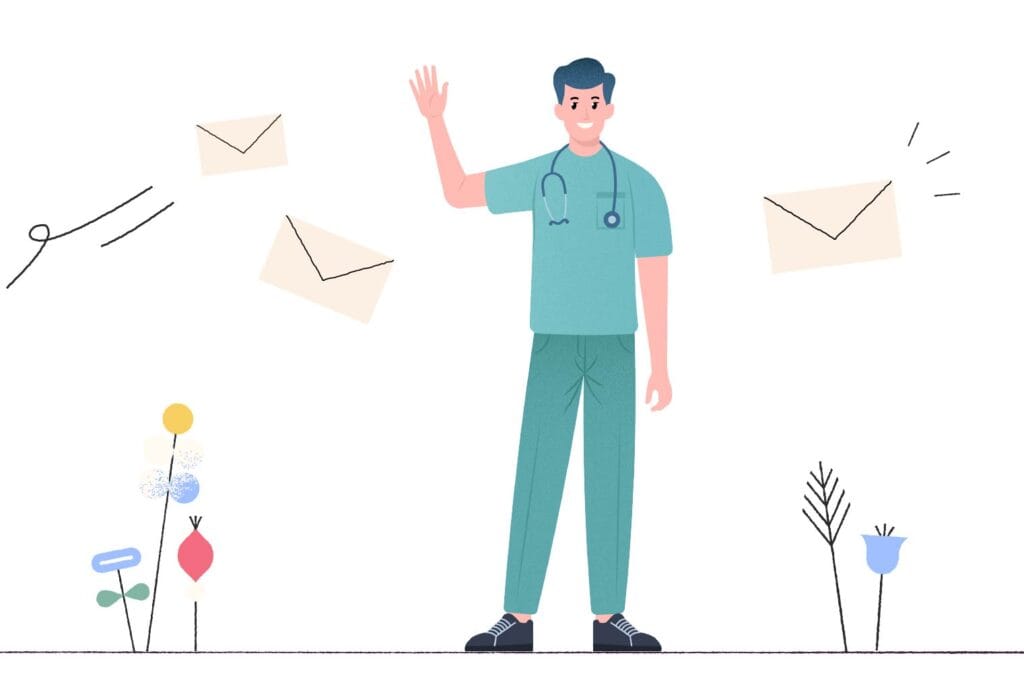If you’re reading this blog, we assume you’re already familiar with EPA-based education and are ready to put it into practice for your medical program. An important but often overlooked step is a successful implementation for your EPA Portfolio. Hopefully, you’ve found the portfolio that suits you best. If not, be sure to check out our checklist to guide your decision. But if you’ve already made your choice, it’s time to take the next step. Here are five essential steps to successfully implement an EPA portfolio in your organization.
Step 1: Incentivize the learner
To truly benefit from the EPA way of learning, trainees must see tangible benefits in their daily practice. For a portfolio to be effective, both trainees and trainers must be well-aware of its functionalities. Regular evaluations of each EPA determines the trainee’s level of supervision for the individual skills. We find that this allows trainee’s to easily maintain a clear overview of their progress. Trusting trainee’s to perform under varying degrees of supervision based on their level, ensures that these levels are taken seriously.
Step 2: Create a culture of continuous feedback
Now this is a big one. Depending on your national culture, a healthy culture of feedback may come more or less naturally to your organization. This can be especially tricky between trainers and their subordinates. It’s essential to set expectations for actively seeking feedback. Feedback should be framed as a precious gift, a constructive tool for growth rather than a critique to be feared. Embedding this mindset clearly helps to create an environment where continuous learning is the norm.
Building a feedback culture doesn’t happen overnight. It takes effort, trust, and a little bit of bravery. Start by weaving feedback into everyday moments, team meetings, quick check-ins, even coffee chats. When people see their feedback sparking real change, they’ll be way more likely to keep the conversation going.


Step 3: Foster a culture of knowledge sharing
Knowledge is power… but only when shared. In a learning environment driven by EPAs, open knowledge exchange is essential for both individual and collective growth. When trainese and trainers actively share insights, experiences, and best practices, everyone benefits.
So, how do you make knowledge sharing a habit? Start by creating structured opportunities for discussion, such as regular case-based learning sessions, peer reviews, or short knowledge-sharing moments in team meetings. Encourage trainees to document and reflect on their experiences, making their learning visible to others. And most importantly, lead by example: when trainers openly share their expertise, it sets the tone for a culture where learning never stops.
Step 4: Empower superusers
Every system needs its champions, your EPA portfolio is no exception. Superusers are the go-to experts within your organization who deeply understand the portfolio’s functionalities and can support others in using it effectively. By appointing and training superusers, you ensure that knowledge isn’t concentrated in just a few hands but is accessible to everyone who needs it.
Why is this important? Because even the best tools are only as effective as the people using them. Superusers help troubleshoot issues, answer questions, and encourage best practices. They bridge the gap between technical possibilities and practical use, making adoption smoother for both learners and supervisors. Plus, having enthusiastic early adopters sets a positive example, fostering a culture where the portfolio becomes an integrated part of daily learning rather than just another administrative task.
Step 5: Make it fun: the workplace-based assessments trophy & feedback cake
Engagement skyrockets when there’s a little competition (and cake) involved. To keep everyone motivated, consider introducing a trophy for the trainee who collects the most meaningful feedback or completes the most workplace based assessments. And for the trainer who gives the most valuable feedback? A well-deserved cake as a token of appreciation.
Why does this work? Because recognition fuels behavior. By rewarding those who actively participate, you reinforce the importance of continuous feedback and make it a natural part of learning. Plus, who doesn’t love a bit of friendly rivalry? Whether it’s a trophy on display or a shared slice of victory, celebrating effort makes the whole process feel less like a checkbox exercise and more like a team-driven success.
Download our roadmap
We hope this article has given you valuable insights into a successful implementation process. We created a roadmap with all steps, key takeaways and extra tips for a successful implementation. Simply fill in the form below, and we’ll send it directly to your inbox!
For all other articles and webinars, visit our EPA learning hub!


